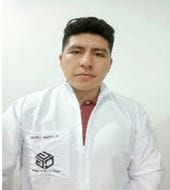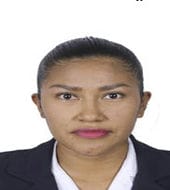Digital tools to enhance teaching for teachers in the postgraduate program of dentistry in the specialization of maxillofacial radiology
Main Article Content
Abstract
At Hemisferios University's postgraduate program in dentistry, specializing in maxillofacial radiology, located in the city of Quito, it has been observed that teachers, upon becoming acquainted with educational digital tools, do not effectively use them with students. As a result, the teaching-learning process becomes unattractive and traditional, lacking interactive and meaningful education.
Given the emergence of new educational paradigms such as artificial intelligence (AI) and information and communication technologies (ICT), it is essential to incorporate changes in teaching-learning processes to align with the comprehensive education of students.
In addition to acquiring knowledge in their respective areas, teachers must achieve an optimal level of digital competencies. The use of ICT applied in education should foster collaborative and meaningful learning. Therefore, it is essential to emphasize the importance of providing a technological literacy training plan for teachers, considering current trends that facilitate students' general access to multiple mobile applications, devices, and tablets, among others. Hence, it is considered necessary for teachers to appropriately handle technological tools, considering new changes and advancements in informatics.
Downloads
Article Details

This work is licensed under a Creative Commons Attribution-NonCommercial-ShareAlike 4.0 International License.
1. Derechos de autor
Las obras que se publican en 593 Digital Publisher CEIT están sujetas a los siguientes términos:
1.1. 593 Digital Publisher CEIT, conserva los derechos patrimoniales (copyright) de las obras publicadas, favorece y permite la reutilización de las mismas bajo la licencia Licencia Creative Commons 4.0 de Reconocimiento-NoComercial-CompartirIgual 4.0, por lo cual se pueden copiar, usar, difundir, transmitir y exponer públicamente, siempre que:
1.1.a. Se cite la autoría y fuente original de su publicación (revista, editorial, URL).
1.1.b. No se usen para fines comerciales u onerosos.
1.1.c. Se mencione la existencia y especificaciones de esta licencia de uso.
References
Inche, J. (2010). Modelo Dinámico de Gestión del Conocimiento basado en el
Aprendizaje Organizacional en una Institución Educativa en el Perú. [Tesis para
optar el grado de Doctor en Ciencias Administrativas]. UNMSM Unidad
de Posgrado. Chrome-extension://efaidnbmnnnibpcajpcglclefindmkaj https://cybertesis
.unmsm.edu.pe/bitstream/handle/20.500.12672/1139/Inche_mj.pdf?sequence=1
Kriscautzky, L. M. (2019). ¿Cómo y por qué nos formamos los docentes en el uso
de tecnología? Revista Digital Universitaria, 3 https://www.revista.unam.mx/2019v20n6/como-y-por-que-nos-formamos-los-docentes-en-el-uso-de-tecnologia/.
Visa, Mariona. (2014) El EEES como marco de desarrollo de las nuevas herramientas docentes
Amores, Antonio (2020) Las Nuevas Tecnologías como factor de motivación –
Cabero, J. y Romero, R., (2010). Diseño y Producción de TIC para la formación. Recuperado de
https://books.google.co.ve/books?isbn=849788163X
Fernández, E., Leiva, J. y López, E. (2017). Competencias digitales en docentes de Educación
Superior. Revista Digital de Investigación en Docencia Universitaria, 12(1), 213-231.
Recuperado de https://revistas.upc.edu.pe/index.php/docencia/article/view/558/752
Gómez, W. (2010). Significado que le dan los profesores al uso de las tics en los procesos de
enseñanza y de aprendizaje en dos instituciones educativas. Recuperado de
http://www.colombiaaprende.edu.co/html/docentes/
Araujo de Cendros, Dory; Bermudes, José Limitaciones de las tecnologías de información y
comunicación en la educación universitaria https://www.redalyc.org/pdf/979/97912444001.pdf
Echeverria, Viviana, Molina Paulina (2017) Herramientas digitales en el aprendizaje y su
relación con las habilidades creativas de los estudiantes.
https://revistas.itsup.edu.ec/index.php/sinapsis/article/view/608/1539
Valle, Y. (2018.) Sin las TIC, la educación superior y de posgrado no está completa
Belloch, C. (2015). Las Tecnologías de la Información y Comunicación en el aprendizaje.
Universidad de Valencia: Valencia, España. Recuperado de https://www.uv.es/bellochc/pedagogia/EVA1.pdf



